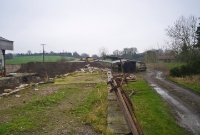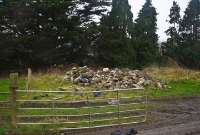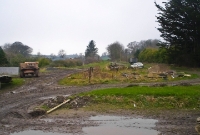Inniskeen
Inniskeen, Co.Louth, is probably more well known for being the home of poet Patrick Kavenagh, but it was also once a junction located on the former Great Northern Railway's line which ran from Dundalk to Enniskillen, opened in 1851. It was in July 1886 that Inniskeen became the junction for the short six mile branch to Carrickmacross. The branch lost its passenger services in 1947, but goods continued until the end of 1959, two years after passenger traffic on the main line were withdrawn in October 1957. Today, both the up and down platforms at Inniskeen survive, along with the main station building and GNR canopy, which has recently been renovated and extended. All other buildings have been demolished.







